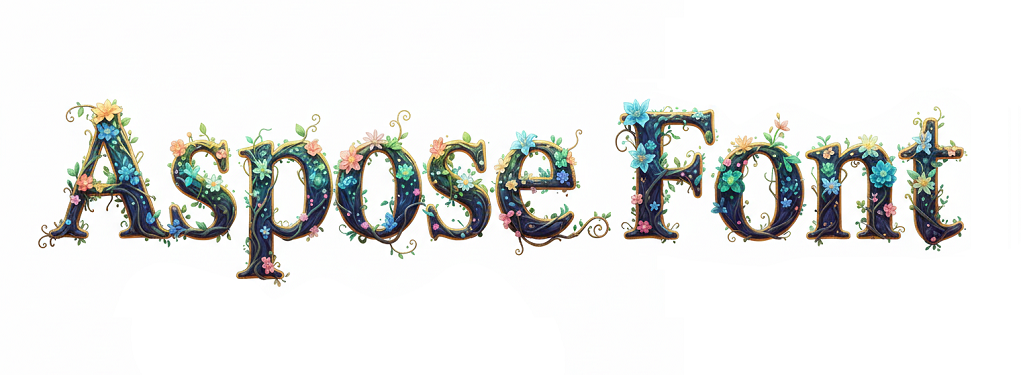AI-generated Fonts. The Future of typography
What are AI-generated fonts?
AI-generated fonts are those ones that were created or heavily modified using artificial intelligence instead of relying on the traditional, human type designer where every character is created manually.
How AI fonts are created?
Here are the key aspects of AI fonts and how the technology is used:
- AI font generators use machine learning models trained on vast datasets of existing fonts and typographic principles.
- The models learn the core rules of typography, including glyph shapes, kerning, stroke contrast, and style consistency.
- Based on user prompts describing a desired design or existing font samples, the AI can then either create a font from scratch or apply the characteristics of one style to an existing font.

Some tools can also generate an entire font or even a font family based on only a few reference glyphs.
Pros and cons of AI-generated fonts
AI-generated fonts offer a powerful set of advantages while also presenting several important challenges and drawbacks. Let’s take a look at the most important of them:
| Pros | Cons |
|---|---|
| Font design traditionally takes weeks or months. Using AI tools, you can notably increase the speed and efficiency when working with font design. | There is always a risk that the font will be alike other fonts because AI models are trained on existing examples. |
| AI tools are often more affordable than paying a professional type designer for a custom font. They make custom or unique typography accessible to small businesses, freelancers, and regular users. | The legal status of AI-generated work is unsure. Issues include: 1. Is it fair to use the work of human type designers to train models that may compete with them? 2. Who owns the copyright to the final font—the user, the AI platform, or no one? 3. AI may inadvertently generate a design that is too similar to an existing copyrighted font. |
| AI models help you maintain a consistent style, weight, and kerning across a typeface. | While simple customization is easy, AI-generated fonts are not flexible and hard to manipulate. So they are not the option for professional designers or complex typographic projects. |
| AI fonts are great for the prototyping stage of the project, where you create a general look of the design and need to make many alterations before the result is agreed upon. | Designers may overuse AI for initial concepts. It may lead to worsening their own skills. |
| AI lets you create typefaces to match the event, holiday, or any other occasion, like a thematic change of style of the GOOGLE logo. | Designers may overuse AI for initial concepts. It may lead to worsening their own skills. |
Despite some fears, AI is increasingly viewed not as a complete replacement for designers, but as a helpful tool to automate the technical tasks, allowing human creativity to focus on the essential artistic fine-tuning and creative direction.
Where can AI fonts be safely used?
To use AI-generated fonts, the safest scenarios generally involve significant human modification and review.
Here are the scenarios and best practices for use:
Personal and non-commercial use: You can use the AI fonts to practice design skills or simply see what the AI can create. You can also create different graphics for a private social media profile, a personal blog with no advertising, or a school project.
Commercial use with human oversight and modification: Users can use the AI-generated font as a starting draft or inspiration and then modify, adjust, refine, and finalize the font’s design. This helps you get potential copyright protection for the final work and reduces the risk of the font resembling a protected existing one.

You can also use the AI-generated font to create a static image (like a logo, JPEG, or PNG) where the font data itself is not distributed. You are using the image of the typeface, not the font software itself.
- Using platform-specific guarantees The safest commercial use is with AI tools that offer clear intellectual property (IP) guarantees. Use AI font or image generators where the provider (like Adobe Firefly, Midjourney, or others) states that the user owns the commercial rights to the generated output and/or offers an indemnification against third-party IP infringement claims.
You must read the specific terms of service for the tool you are using.
Future outlook to AI fonts
The future outlook for AI-generated fonts and typography is questionable, but AI will fundamentally change how fonts are created, chosen, and used.
Experts and industry leaders are optimistic. Many designers have already learn and integrated AI tools into their workflow.
Here are the key aspects of the future outlook for AI fonts:
- Core Technological Advancements and innovations:
- AI lets you create responsive fonts that can adapt in real-time to user preferences, context (e.g., screen size, ambient light), or content analysis.
- AI will analyze readability data and aesthetic trends to automatically suggest the most suitable font combinations. It will also automate tedious tasks in font design, such as building kerning tables, writing OpenType features, or expanding designs to new global writing systems.
- AI will lower the technical barrier for creating and choosing fonts, enabling a broader audience.
- Impact on designers and workflow
- AI will help, not replace, human font designers and graphic designers, taking on the repetitive tasks and significantly speeding up the design process.
- Designers will become curators, editors, or “prompt engineers,” managing the AI’s output.
- Emerging challenges and ethical considerations
- As AI models are trained on datasets of existing fonts, issues with copyright, intellectual property, and clear licensing for AI-generated fonts will be paramount. Foundries will need to use clear, flexible licensing models.
- AI models trained on biased data may favor certain typographic styles, potentially leading to a commoditization or homogenization of fonts that lack artistic distinctiveness.